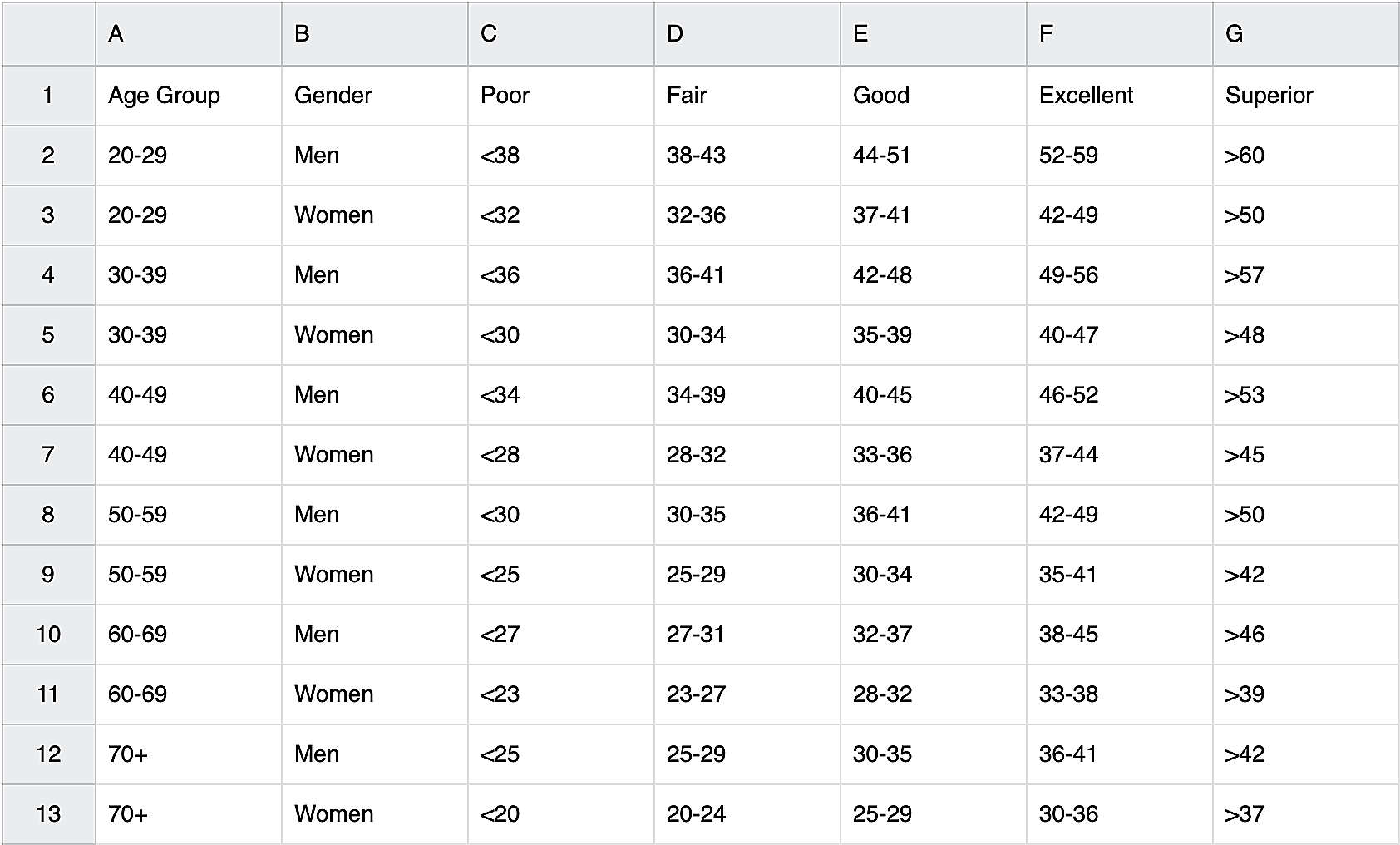
‘Bridging the gap between lab coats and living rooms'
My insight into what VO2 max could tell us about ageing happened one night last year. I was reviewing research papers late one evening, over a cup of tea, when I came across Dr. Zsolt Radak's groundbreaking DNAmFitAge study. The implications of the paper? We might actually be able to turn back our biological clocks. Here was a 70 year old endurance athlete in a Budapest lab, running on a treadmill whilst connected to monitoring equipment, his cardiovascular system functioning like someone two decades younger. This wasn't just about fitness anymore. This was about rewriting the very story of how we age. But what exactly is VO2 max? And more importantly, what can it do for you?
Think of VO2 max as your body's engine horsepower, it measures how efficiently you can use oxygen during exercise. The higher your VO2 max, the more efficiently your body produces energy. Better endurance, greater resilience, and yes, potentially a longer, healthier life. For years, I've watched this metric serve as the gold standard for athletic performance. But recent research suggests it's also something far more profound: a crystal ball for ageing. Studies consistently show that lower VO2 max links to increased risk of chronic disease and early mortality, whilst higher scores correlate with longer, healthier lives.
The numbers don't lie. People with higher cardiovascular fitness don't just perform better on treadmill tests, their cells display DNA methylation patterns typically seen in much younger individuals. This is where it gets truly exciting.
During my years as a health educator, I've seen countless people discover their biological age through various assessments. However, nothing quite prepared me for what Dr. Kristen McGreevy from UCLA uncovered in her research. She found that VO2 max correlates strongly with DNA methylation, a biological process that changes with age and serves as what scientists call an "epigenetic clock". Here's what McGreevy discovered: the entire cardiorespiratory system, from lungs to heart to muscles, works together more efficiently in those with higher VO2 max. This efficiency apparently translates to cellular processes that influence ageing itself.
Are we actually turning back time? The evidence suggests we might be.
Now, I need to be honest with you about something. We don't all start from the same place. Research suggests that 40-70% of our VO2 max potential is written in our genes. Some people naturally process oxygen more efficiently than others, that's just biology.
However, here's where it gets hopeful. Ferenc Torma, another researcher on Radak's team, notes that regular endurance training can improve anyone's VO2 max by 15-20%, regardless of genetic starting point. As he puts it, "That improvement could translate to being biologically younger by potentially a decade or more." Let me put this in perspective. Whilst our VO2 max naturally declines at 7-10% per decade after age 25, consistent exercise can dramatically slow this process. We're essentially fighting time itself, and winning.
I remember working with Rachel, a 58 year old teacher who came to my workshops convinced she'd "left it too late" to make any real difference to her health. After six months of gradually building her cardiovascular fitness, her estimated biological age dropped from 62 to 54. She literally glowed when she told me, "I feel like I've found the fountain of youth in my local park."
Her experience mirrors what the research consistently shows: it's never too late to start. Studies demonstrate that even beginning an exercise programme in your 60s or 70s can lead to significant improvements in VO2 max and, consequently, biological age.
Whilst VO2 max provides a powerful window into biological ageing, it's just one piece of the puzzle. The comprehensive DNAmFitAge study incorporated additional markers like grip strength, gait speed, and lung function to create a more complete picture of fitness-based biological age. The results were striking. People with younger "DNAmFitAge" showed significantly lower mortality risk, reduced coronary heart disease risk, and higher disease-free status. But beyond these numbers lies a fundamental truth that I've witnessed repeatedly in my work: how we move through the world profoundly affects how we age within it.
"But how do I actually measure this?" you might ask. Most of us don't have access to specialised labs with metabolic testing equipment, but there are accessible ways to estimate your VO2 max.
The Cooper test, covering as much distance as possible in 12 minutes, provides a reasonable estimate. So does the 3 minute step test. Many modern fitness wearables calculate estimated VO2 max based on heart rate response during exercise. As Ferenc Torma wisely notes, "What's important isn't necessarily having the exact number. It's understanding where you stand relative to others your age and seeing how you improve over time with consistent training." The journey matters more than any single measurement. I've seen this principle play out countless times in my workshops and consultations.
Understanding what constitutes a "good" VO2 max provides helpful context. Here's a simplified guide to VO2 max values (in mL/kg/min) by age and gender:

For men in their 20s, "good" ranges from 44-51 mL/kg/min, whilst "excellent" reaches 52-59. For women the same age, "good" spans 37-41, with "excellent" at 42-49. These numbers naturally decline with age, by your 60s, men's "good" range drops to 32-37, women's to 28-32.
However, here's the leason: lifestyle trumps demographics every time. I've seen trained 60 year olds easily outperform sedentary 30 year olds, regardless of gender. Your biological age isn't determined by your birth certificate, it's determined by how you live.
The connection between VO2 max and DNA methylation opens fascinating avenues for understanding ageing itself. As Dr. Radak clarifies, this research isn't about extending maximum human lifespan. Rather, it focuses on extending healthy, functional years:
"giving more life to your years rather than just more years to your life."
This distinction becomes increasingly important as our global population ages. If improved cardiovascular fitness can delay age-related diseases and maintain independence longer, the implications for public health are enormous.
After so many years of working in health education, I've watched science continually surprise us with new insights into ageing and longevity. But this research on VO2 max feels different. It's not promising miracle cures or expensive interventions. It's revealing something beautifully simple: one of our most powerful anti-ageing tools has been available to us all along.
For most of us, the message from this research is both simple and profound: whilst we can't stop time's forward march, we can fundamentally alter how our bodies experience it. The biological clock that matters most is the one ticking away in our cells. And one of the most powerful tools for slowing that cellular clock might be as simple as lacing up your trainers, hopping on a bike, or diving into a swimming pool.
Building your VO2 max isn't just about fitness, it's about claiming back years of vitality, energy, and health. The best part? You can start today. Whether you're 35 or 75, your next workout could be the beginning of turning back your biological clock. Now that's what I call ageing backwards.
The information presented here is intended solely for educational purposes. While we strive to provide accurate, evidence-based content, this is not medical advice and should never replace consultation with healthcare professionals. Science evolves constantly, and individual health circumstances vary widely. Please consult qualified healthcare professionals for specific health concerns, diagnosis, or treatment recommendations.